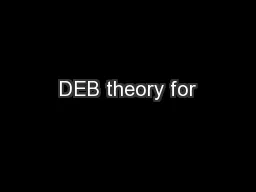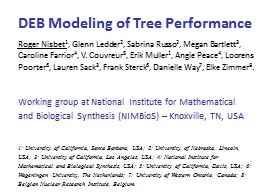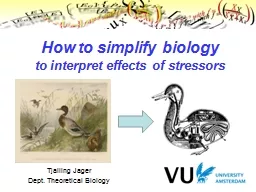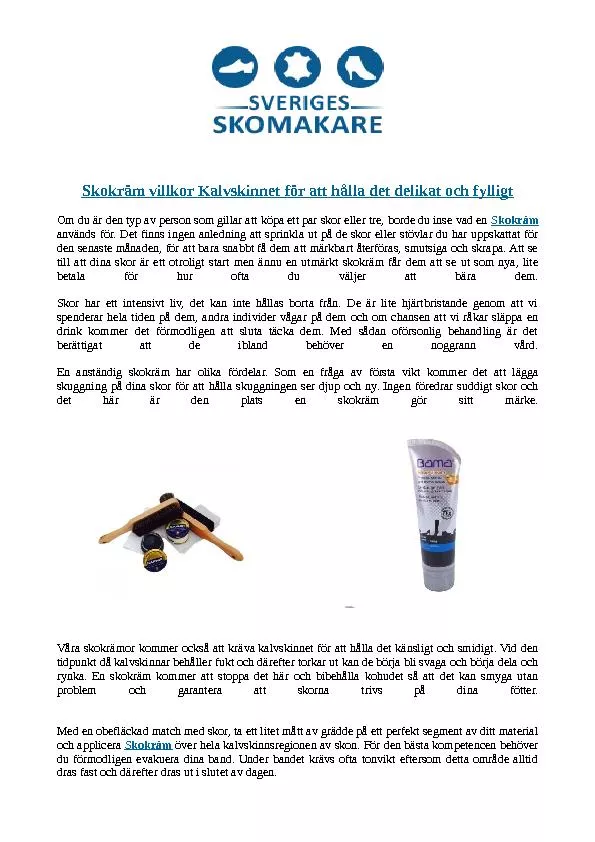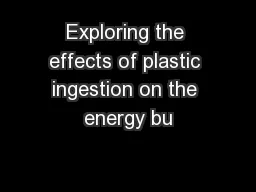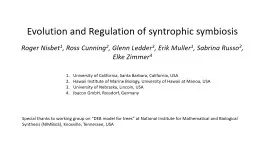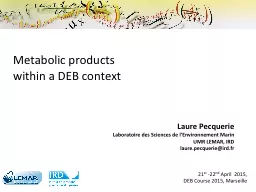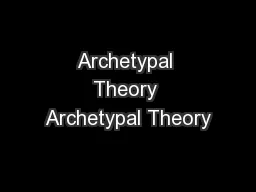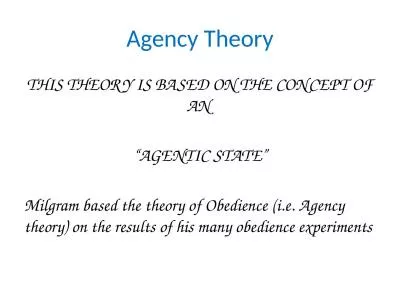PPT-DEB theory for
Author : conchita-marotz | Published Date : 2016-03-20
poopulatins communities and ecosystems lecture III Background for sections 91 and 94 of DEB3 Roger Nisbet April 2015 Remember my pet Carbon flow and phosphorus
Presentation Embed Code
Download Presentation
Download Presentation The PPT/PDF document "DEB theory for" is the property of its rightful owner. Permission is granted to download and print the materials on this website for personal, non-commercial use only, and to display it on your personal computer provided you do not modify the materials and that you retain all copyright notices contained in the materials. By downloading content from our website, you accept the terms of this agreement.
DEB theory for: Transcript
Download Rules Of Document
"DEB theory for"The content belongs to its owner. You may download and print it for personal use, without modification, and keep all copyright notices. By downloading, you agree to these terms.
Related Documents

